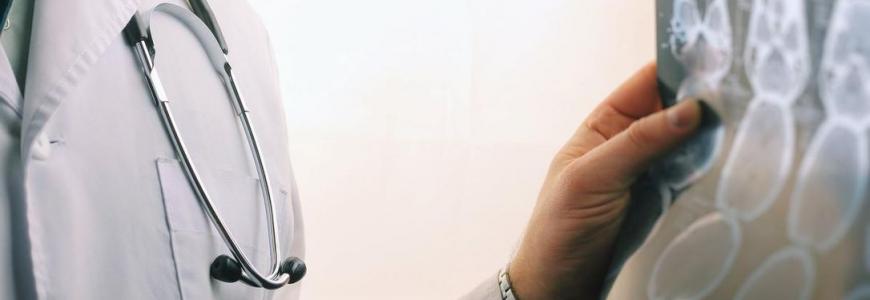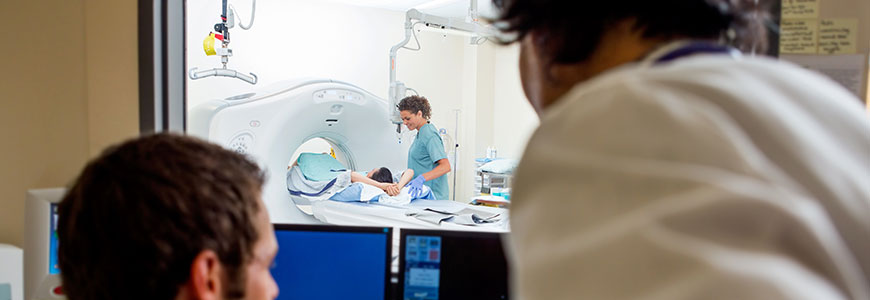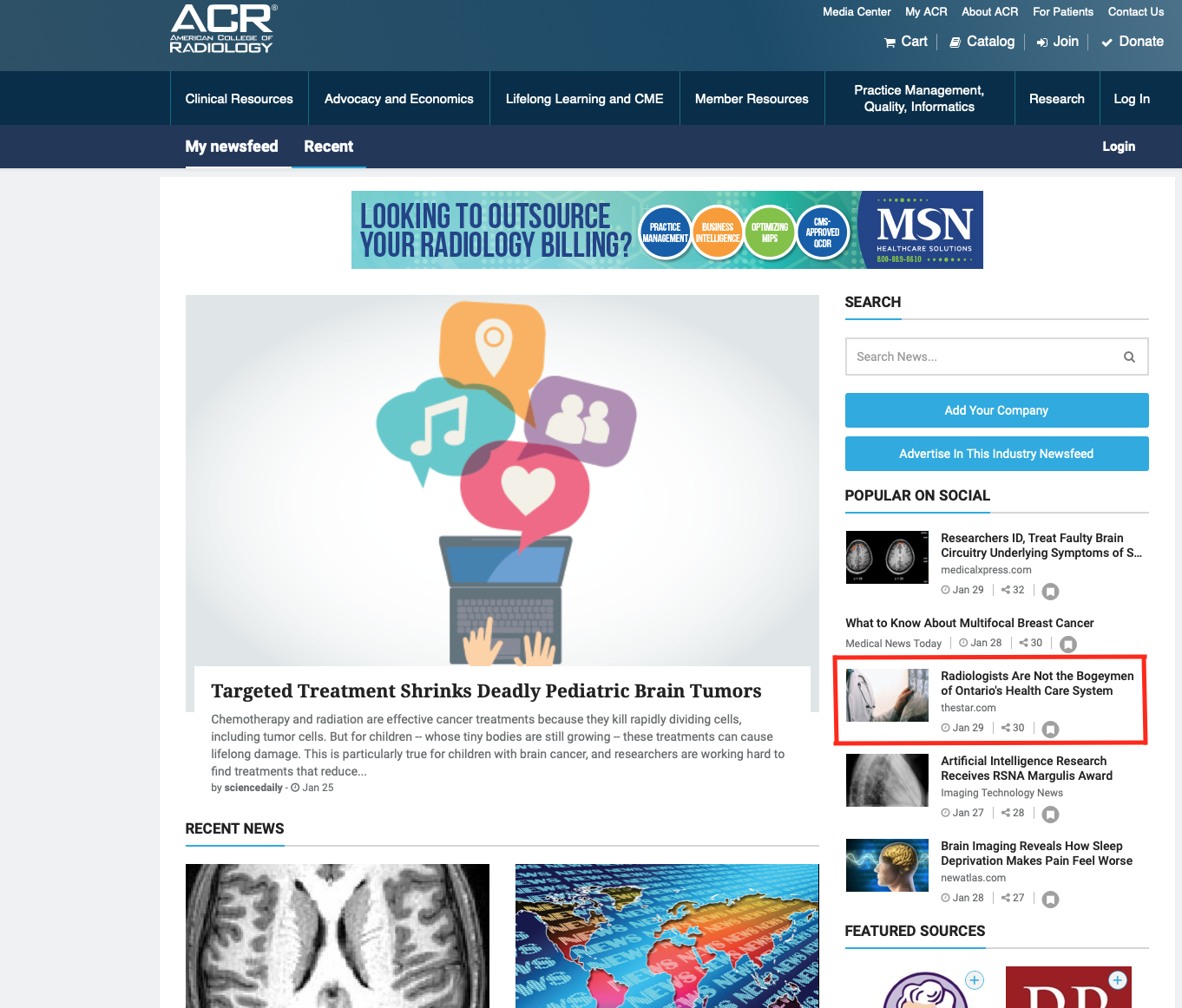
Defence of Radiology: ACR News
Dr. Andrew Chung's Defence of Radiologists Makes ACR News
The OAR would like to commend Dr. Chung for his initiative and leadership in his defence of radiologists. His excellent article was picked up by ACR News. The article was inspired after a recent op-ed piece by Dr. Bob Bell criticizing radiologists in the Toronto Star.

Radiologists are not the bogeymen of Ontario’s health care system
By Dr. Andrew Chung
In recent years, radiologists have become a frequent and favoured target of media criticism. Our reputation as a “high income” specialty has certainly made us an easy mark; but I believe that the more culpable reason is that our vital role in health care is poorly understood and therefore makes us convenient bogeymen against whom it is easy to sway the public and even our fellow physicians against.
Radiologists are responsible for the interpretation of diagnostic imaging (x-ray, CT, ultrasound, MRI, to list the major players). They’re also responsible for the bulk of image-guided procedures (including drainages, biopsies, and tumour ablations).
Our specific training and knowledge are critical for the timely diagnosis of many illnesses, including cancer, which may be entirely unexpected and unsuspected. Our recommendations also help guide other physicians toward the next appropriate test or specialist referral.
Yet because our direct interaction with most patients is limited, few will explicitly remember our part in their health care journey.
Some have argued that technological advances have made radiology faster, and by their logic, the value of each study is diminished. However, in doing so, they are only providing half the picture. Yes, we can acquire images faster and have access to them faster.
However, the role of the radiologist, which is to interpret those images, has only become more complex. Imaging studies now have hundreds of images viewed in multiple planes. We are responsible to correlate with prior imaging and with the patient’s clinical history, which is now available electronically.
The fidelity of images means that the amount of diagnostic information on each image has increased. This means the diagnostic accuracy expected, the difficulty of the task of interpretation, and the liability associated with each study has increased — not decreased.
No other profession would expect that as the task becomes more complex, and as the information they provide becomes more accurate and more valuable to their clinical colleagues, their work would subsequently incur a drop in remuneration.
It is easy for non-radiologists to point fingers at the reasons for increased billings by radiology. However the real reason is simple: the volume has increased. The need has increased. The reliance of medicine on imaging has increased. Radiologists have only tried to keep up with it.
In a recent op-ed criticizing radiologists, Dr. Bob Bell pointed to his role as a former cancer surgeon as evidence of his “insider” understanding of radiology. I have immense respect for my surgical colleagues, and many of them do develop competent interpretive skills at looking at their specific organs of interest. However, none of them are responsible for the systematic and final interpretation of images as a radiologist is.
This is the reason why, even outside our written reports, our clinical colleagues frequently consult with us and review images with us, and why we play an important part at multidisciplinary tumour conferences, where oncologists, surgeons, radiologists, and pathologists meet together to discuss challenging cancer patients to plan the correct course of action.
Finally, while it is true that some radiologists may bill extreme numbers, such outliers are true in all specialties. Academic radiologists, such as myself, who receive the most complex cases and have the added responsibilities of teaching and research, will bill a fraction of these numbers. Simple solutions to a complex problem, such as adjusting billing per study, affect academic physicians disproportionately.
Bell states radiologists have billed more and worked fewer days than ever before. What do these fewer days looks like? I have colleagues working in the community routinely working well into the evening, or jumping on their next day’s work by reading studies the night before.
Negative, ill-informed rhetoric and singling out of my specialty has existed long before the proposition of a separate specialist organization (the OSA), and it is precisely this kind of rhetoric that has led many of my colleagues to support such an idea.
Imaging is complex, and so are the challenges that face our health-care system. Simple solutions and trying to paint a simple enemy are Band-Aids that will only hurt more to tear off in the long term. And for those of us being cast the villain, they hurt right now.

